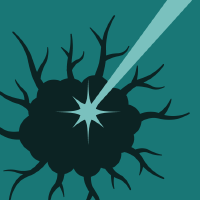Topic Menu
► Topic MenuTopic Editors



Adaptation Mechanisms in Therapy-Resistant Breast Cancer
Topic Information
Dear Colleagues,
The aim of this Topic is to report the recent findings that have increased our understanding of adaptive responses to stress, focusing on resistance to therapy in breast cancer. The usage of omics sciences to characterize cell lines and tumors has uncovered changes in genes, proteins, and other metabolites that result in metabolism adaptation to survive therapy-induced stress. Metabolite changes reflect oncogenic transformation and the remodeling of metabolic pathways, which, in addition to genes and proteins, constitute powerful biomarkers and therapeutic targets. Efforts are needed to go beyond cell line studies and plasma characterization to increase our knowledge of how therapy affects metabolic interplay in the tumor microenvironment. For this Topic, we invite authors to contribute original research, review articles, and meta analyses focusing on metabolic adaptation in hormone receptor-positive breast cancer that promotes or results from therapy resistance. We encourage the submission of articles that explore the biomarker potential of metabolic adaptations, metabolic competition/cooperation between more than one cell type, and the immune tumor microenvironment. Research on the use of novel metabolic modulators to enhance therapy, either natural or synthetic compounds, is also encouraged.
Prof. Dr. Luisa Alejandra Helguero
Dr. Iola F. Duarte
Prof. Dr. Ana M. Gil
Topic Editors
Participating Journals
| Journal Name | Impact Factor | CiteScore | Launched Year | First Decision (median) | APC |
|---|---|---|---|---|---|

Biomolecules
|
5.5 | 8.3 | 2011 | 16.9 Days | CHF 2700 |

Cancers
|
5.2 | 7.4 | 2009 | 17.9 Days | CHF 2900 |

Cells
|
6.0 | 9.0 | 2012 | 16.6 Days | CHF 2700 |

Current Oncology
|
2.6 | 2.6 | 1994 | 18 Days | CHF 2200 |

Onco
|
- | - | 2021 | 18.3 Days | CHF 1000 |

MDPI Topics is cooperating with Preprints.org and has built a direct connection between MDPI journals and Preprints.org. Authors are encouraged to enjoy the benefits by posting a preprint at Preprints.org prior to publication:
- Immediately share your ideas ahead of publication and establish your research priority;
- Protect your idea from being stolen with this time-stamped preprint article;
- Enhance the exposure and impact of your research;
- Receive feedback from your peers in advance;
- Have it indexed in Web of Science (Preprint Citation Index), Google Scholar, Crossref, SHARE, PrePubMed, Scilit and Europe PMC.

